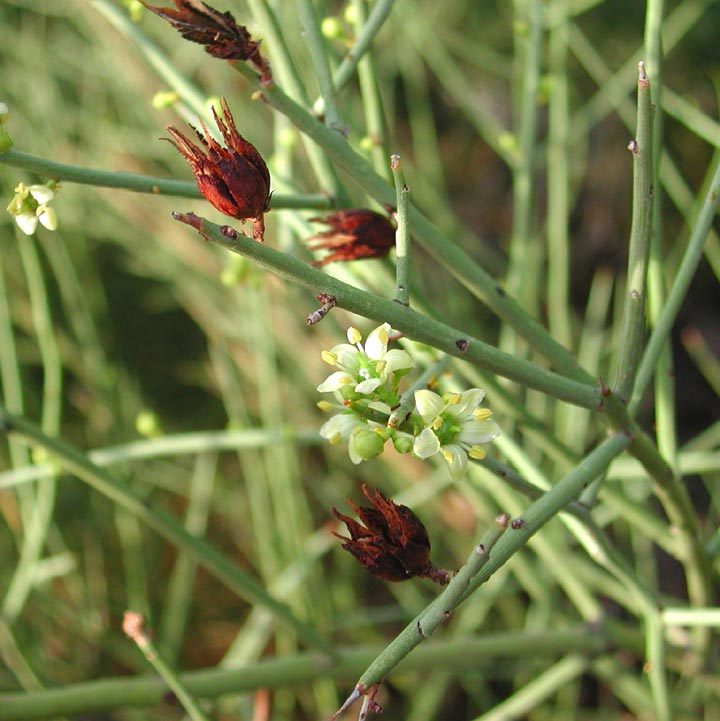|
Celastraceae |
|
|
PLANTS: Shrubs or small trees, sometimes thorny, often glabrous or nearly so. LEAVES: alternate or opposite, simple, persistent (or scale-like and caducous), sessile to shortly petiolate; stipules small and caducous, or absent. FLOWERS: perfect, small, actinomorphic, 4- or 5-merous, hypogynous or slightly perigynous; sepals connate to distinct, usually imbricate; petals distinct, sometimes imbricate; stamens distinct, seated on or outside the usually well-developed nectary disk (this rudimentary or absent in Canotia), typically in a single series alternate with the petals; ovary usually 2-5-loculed; style terminal, generally short, with a capitate or lobed stigma. FRUIT: a capsule (sometimes indehiscent). SEEDS: often arillate. NOTES: About 50 genera and 800 spp., pantropical (especially in se Asia) and with a lesser number of genera and spp. in temperate regions. Species of Euonymous and other genera from this family are cultivated as ornamentals. Glossopetalon [Forsellesia], formerly included in the Celastraceae, is now assigned to the Crossosomataceae. REFERENCES: Brasher, Jeffrey W. 1998. Celastraceae J. Ariz. - Nev. Acad. Sci. 30(2): 57. |
|

